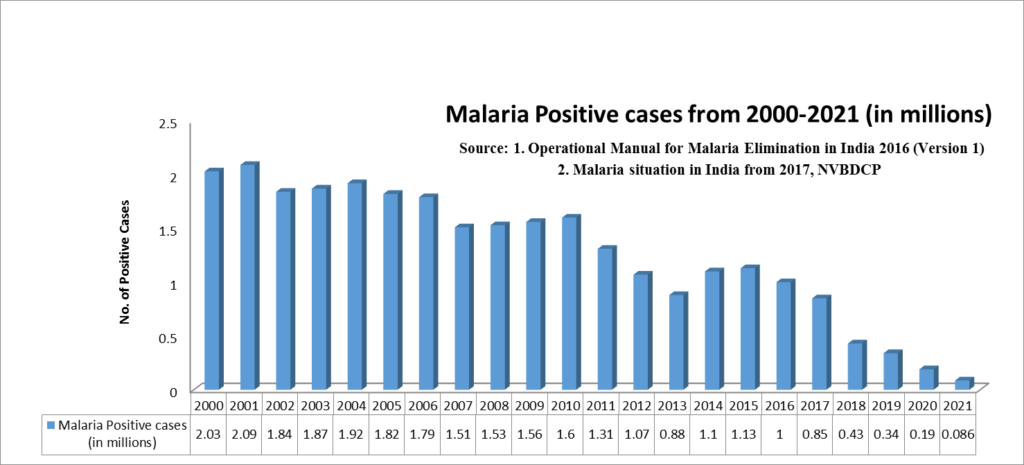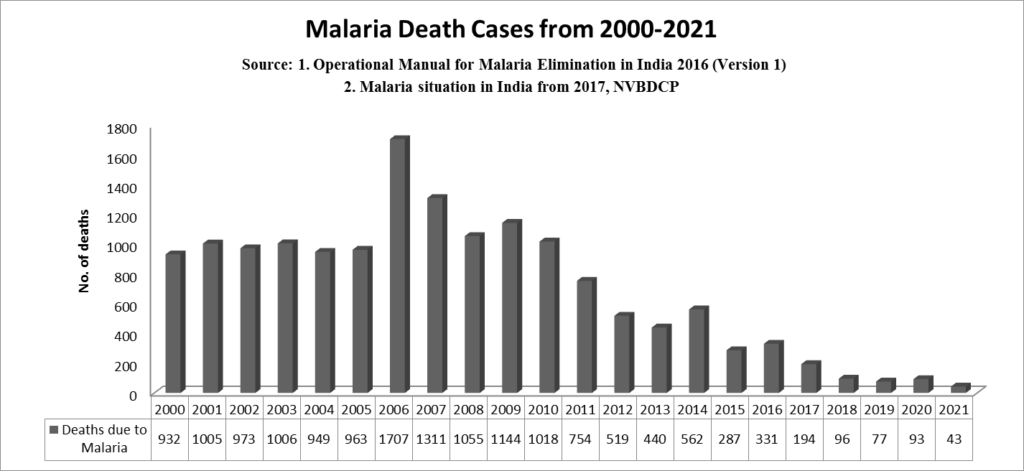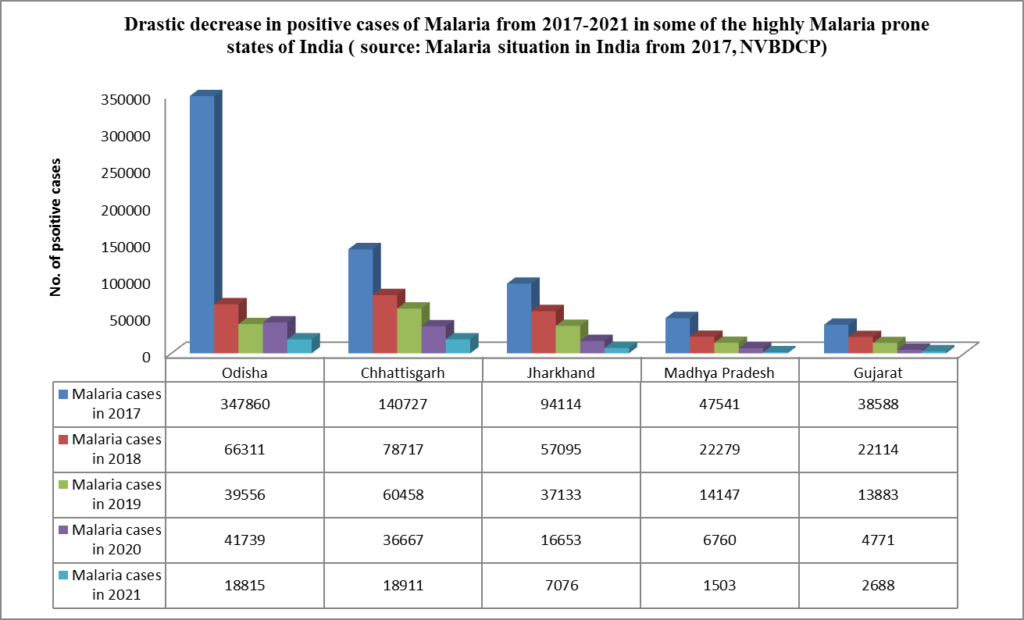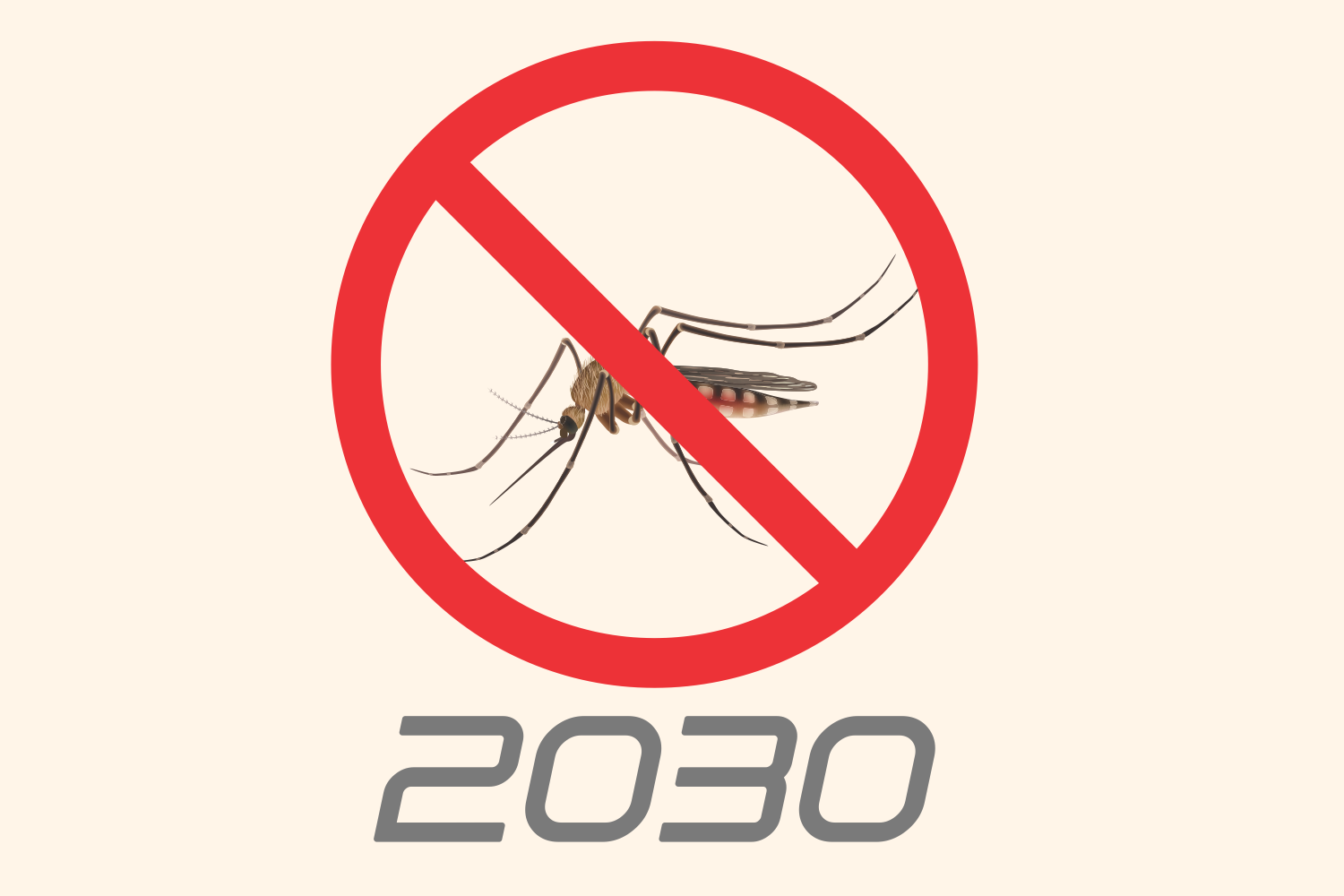Introduction
The Directorate of the NVBDCP (National Vector Borne Disease Control Programme) has taken the mission to eliminate malaria from India by 2030. Accordingly, the mission named “The National Framework for Malaria Elimination in India 2016-2030” has been launched by the Ministry of Health and Family Welfare.
The principle and practices of the mission vary depending upon the epidemiological scenario of malaria in different states and union territories. Thus, for this mission, India has been divided into four categories:
Category 3: Intensified Control Phase (States and Union Territories with an Annual Parasite Index ≥ 1)
Category 2: Pre-Elimination Phase (States and Union Territories with an Annual Parasite Index <1 while some districts may have Annual Parasite Index ≥ 1)
Category 1: Elimination Phase (States and Union Territories with an Annual Parasite Index <1 and all districts report Annual Parasite Index <1)
Category 0: Prevention of Reintroduction Phase (States and Union Territories with zero indigenous malaria cases.)
The mission has four primary objectives:
- Interrupting the transmission of Malaria and zero indigenous cases in states coming under Category 1 and 2 by 2022.
- Reducing malaria incidence to less than one case per 1000 population in all states, Union territories, and districts.
- Interrupting the transmission of malaria across India by 2027
- Complete elimination of malaria across India by 2030
History of Malaria Control and Prevention in India
In the early 1900s till Independence in 1947
The malaria control operations were centered on destroying the larvae of the mosquitoes. Railway stations, Military camps, and tea gardens were some of the significant areas of anti-larval operations.
Use of pyrethrum (an insecticide obtained from the plat pyrethrum) as a space spray was used during the 1930s, and later several clinical trials documented the effectiveness of DDT in controlling malaria. In 1947, India annually had 75 million positive cases of malaria and 0.8 million deaths. According to epidemiologists, 22% of the country’s population was estimated to suffer from malaria.
1953-1965
The National Malaria Control Programme, abbreviated as NMCP, was launched in 1953 to combat the life-threatening effects of malaria. The program mainly dealt with residual insecticidal spray (IRS) with DDT, monitoring and surveillance of malaria cases, and treating malaria patients. The NMCP program was a great success as there was a sharp decline in India’s morbidity and mortality rate due to malaria. Later, in 1958, the NMCP was converted to National Malaria Eradication Programme (NMEP). By 1965, the reported incidence of malaria in India had declined to one lakh cases with zero mortality.
Post-1965 till 1984
Post-1965, there was again an insurgence in malaria cases due to anopheles mosquitoes developing resistance to DDT and technical and operational challenges faced by a healthcare professional to conduct surveillance and vigilance. In addition, researchers noticed a rise in malaria cases in urban areas. Thus, in 1971, an urban malaria control scheme was launched with recommendations from the Madhok Committee. As a result, India reported 6.46 million cases of malaria by 1976. Also, there were reports of P.falciparum becoming resistant to chloroquine and the mosquitoes resistant to insecticides. Thus in 1977, a Modified plan of operations was launched with an objective to early diagnosis, effective treatment, vector control, and participation of ethical committee to safeguard the health of the patients and decline the morbidity and mortality rate. The modified plan of operations was successful, and by 1984, malaria cases were reduced to twenty lakhs with a death count of 247.
1997-2021(present)
The objective to combat malaria in high transmission areas was achieved through an Enhanced Malaria Control Project (EMCP) with additional support from the World Bank in 1997. The National Malaria Control Program, which was earlier renamed to NMEP in 1958, was again renamed as National Anti-Malaria Programme (NAMP) in 1999. Later in 2002, the National Malaria Control Program was integrated into the National Vector Borne Disease Control Programme (NVBDCP). In 2005, an Intensified Malaria Control Project (IMCP) was launched with the aid of The Global Fund to fight AIDS, Tuberculosis, and Malaria (GFATM). Also, during this period, NVBDCP introduced the Monovalent Rapid Diagnostic Tests (RDTs). From 2006 to 2008, Artemisinin-based combination treatment (ACT) was introduced in areas with chloroquine-resistant P.falciparum malaria. In addition, long-lasting insecticidal nets (LLINs) were introduced in 2009. In the same year, Oral artemisinin monotherapy was banned because of its role in developing artemisinin and its derivatives resistant malaria parasite. In 2013, bivalent RDTs were introduced in the malaria control program.
Along with that, the combination of ACT and AL, i.e. (Artemisinin Combination treatment + Artemether + Lumefantrine) began in the North Eastern States of India. Moreover, 2014-15 saw the introduction of newer insecticides and larvicides for malaria control and prevention. Thus, in 2016 the Ministry of Health launched the National Framework for Malaria Elimination in India.
The graph below depicts the decline in the number of positive cases and deaths from malaria from 2000 to 2021 as a result of various preventive and control measures implemented by the Ministry of Health, India. The graphs clearly show the determination of India to be a Malaria free nation by 2030.


Which states in India have shown a massive decrease in positive cases and Deaths of Malaria from 2017-2021?
According to the “Malaria situation in India from 2017” report released by NVBDCP, Indian states of Chhattisgarh, Odisha, Jharkhand, Madhya Pradesh, and Gujarat have shown a massive decrease in the positive cases of Malaria since 2017. Although every state has shown a decline in the positive cases of malaria, the above five states have shown a drastic decrease.

The report also suggests that most states and union territories have zero death count in 2021 except Chhattisgarh and Odisha. Chhattisgarh in 2021 had a death count of 23 patients, whereas Odisha had a death count of 13 patients. In Odisha, the state carried out a program named Durgama Anchlare Malaria Nirakarana (DAMAN) to combat the rise in positive cases and mortality rates due to Malaria. In addition, the NVBDCP malaria control program and the state-led malaria control program have brought massive success in protecting the lives of vulnerable citizens.
The graph below depicts the decrease in malaria death counts in Odisha and Chhattisgarh from 2017 to 2021.
Conclusion
Thus from the above graphical representations, we can analyze that India has successfully decreased the malaria burden over the past two decades. With the advent of the National Vector Borne Disease Control Programme (NVBDCP), the Ministry of Health, aiming to have a malaria-free India by 2030, seems successful. The NVBDCP, in their reports, has stated that the malaria burden in India has declined by 65%, from one million cases in 2016 to 0.086 million cases in 2021. The World Health Organisation (WHO) malaria report 2020 has appreciated India for its aggressive healthcare planning towards eliminating malaria. In addition to the Malaria Elimination program by NVBDCP, the Indian Council of Medical Research has also launched MERA-INDIA. MERA stands for “Malaria Elimination Research Alliance.” MERA, launched on the eve of World Malaria Day 2019, aims to identify, prioritize, articulate, and respond to the country’s research needs to eliminate malaria by 2030. Thus with so many programs running upfront and led by research Institutions and healthcare bodies, we can be sure that India is inching towards a malaria-free country by 2030.
REFERENCES
- Operational Manual for Malaria Elimination in India 2016 (Version 1). Accessed at
https://nvbdcp.gov.in/WriteReadData/l892s/5232542721532941542.pdf - ICMR launches ‘MERA India’ to eliminate malaria by 2030. Accessed at https://www.deccanherald.com/national/icmr-launches-mera-india-to-eliminate-malaria-by-2030-730773.html
- Mera India. Accessed at
https://www.meraindia.org.in/about-mera#:~:text=The%20purpose%20of%20Malaria%20Elimination,malaria%20from%20India%20by%202030. - Malaria Situation In India from 2017. Accessed at
https://nvbdcp.gov.in/index1.php?lang=1&level=1&sublinkid=5784&lid=3689 - Odisha achieved 90 pc reduction in Malaria cases in 3 years: State Govt. Accessed at
https://health.economictimes.indiatimes.com/news/industry/odisha-achieved-90-pc-reduction-in-malaria-cases-in-3-years-state-govt/83864947





